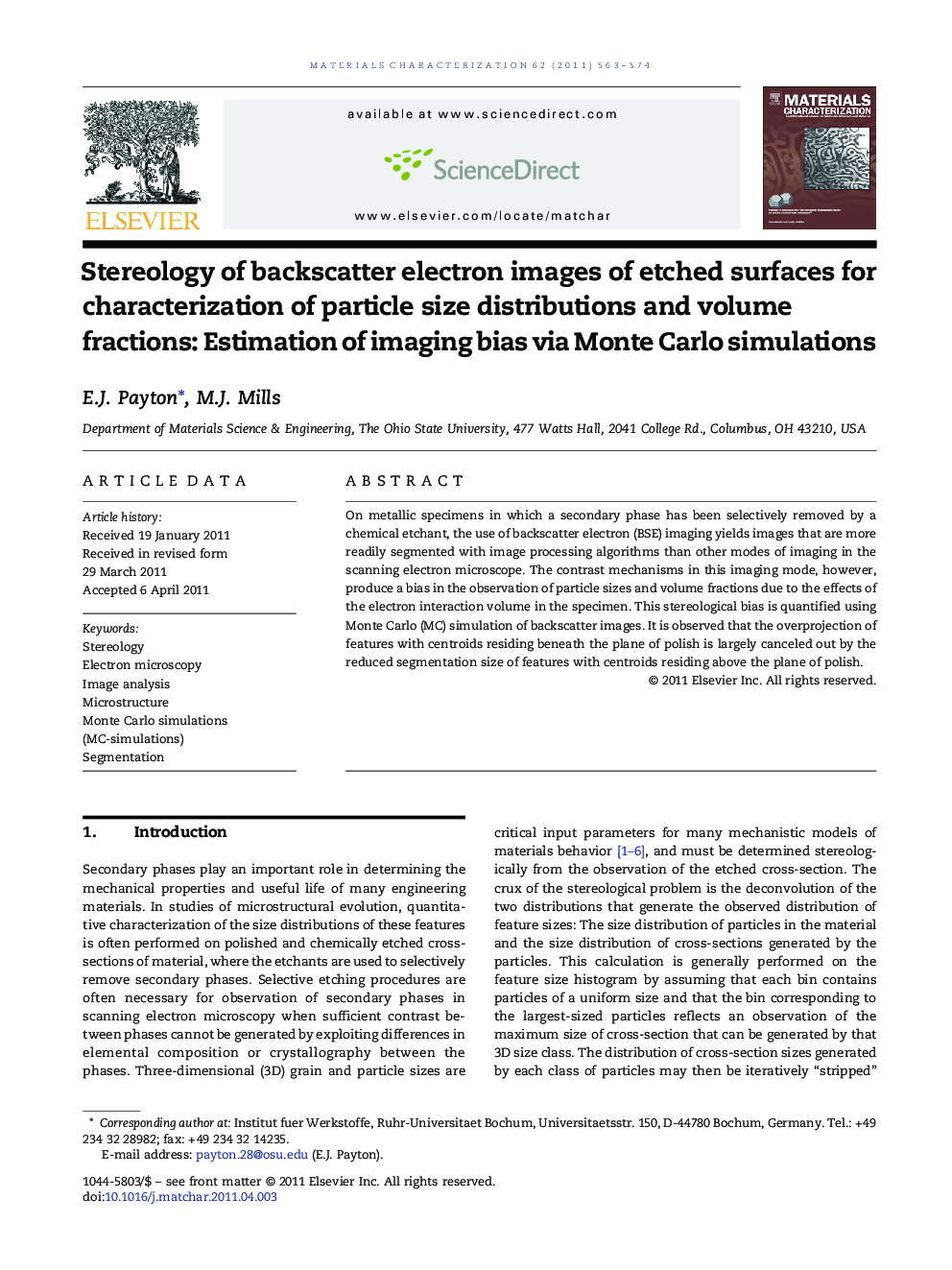| Article ID | Journal | Published Year | Pages | File Type |
|---|---|---|---|---|
| 1571798 | Materials Characterization | 2011 | 12 Pages |
On metallic specimens in which a secondary phase has been selectively removed by a chemical etchant, the use of backscatter electron (BSE) imaging yields images that are more readily segmented with image processing algorithms than other modes of imaging in the scanning electron microscope. The contrast mechanisms in this imaging mode, however, produce a bias in the observation of particle sizes and volume fractions due to the effects of the electron interaction volume in the specimen. This stereological bias is quantified using Monte Carlo (MC) simulation of backscatter images. It is observed that the overprojection of features with centroids residing beneath the plane of polish is largely canceled out by the reduced segmentation size of features with centroids residing above the plane of polish.
Research Highlights► Backscatter imaging of selectively-etched surfaces can facilitate segmentation. ► Backscatter imaging of voids is simulated to estimate imaging/observation biases. ► The biases are quantified and incorporated into the stereological calculation. ► Systematic errors and imaging biases are observed to counteract one another. ► Results are illustrated using a bimodal gamma prime distribution in a Ni superalloy.
